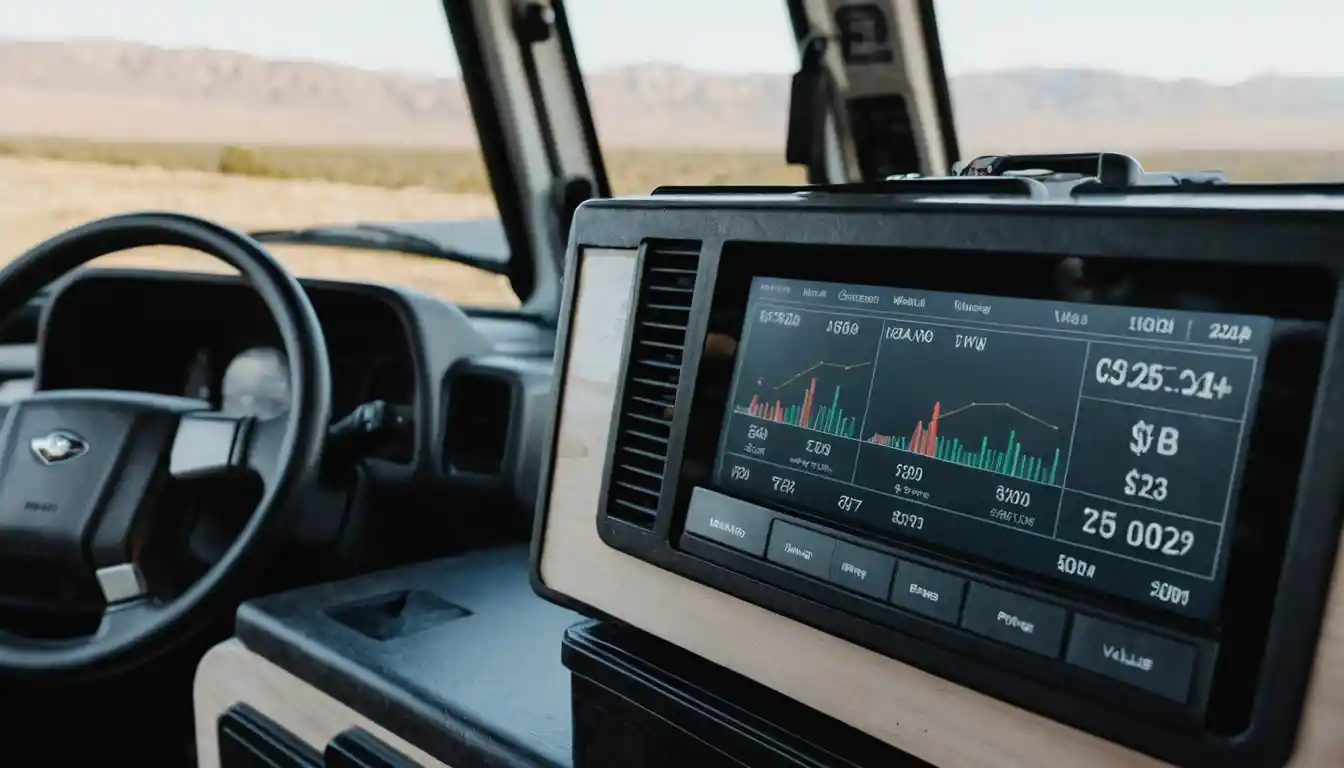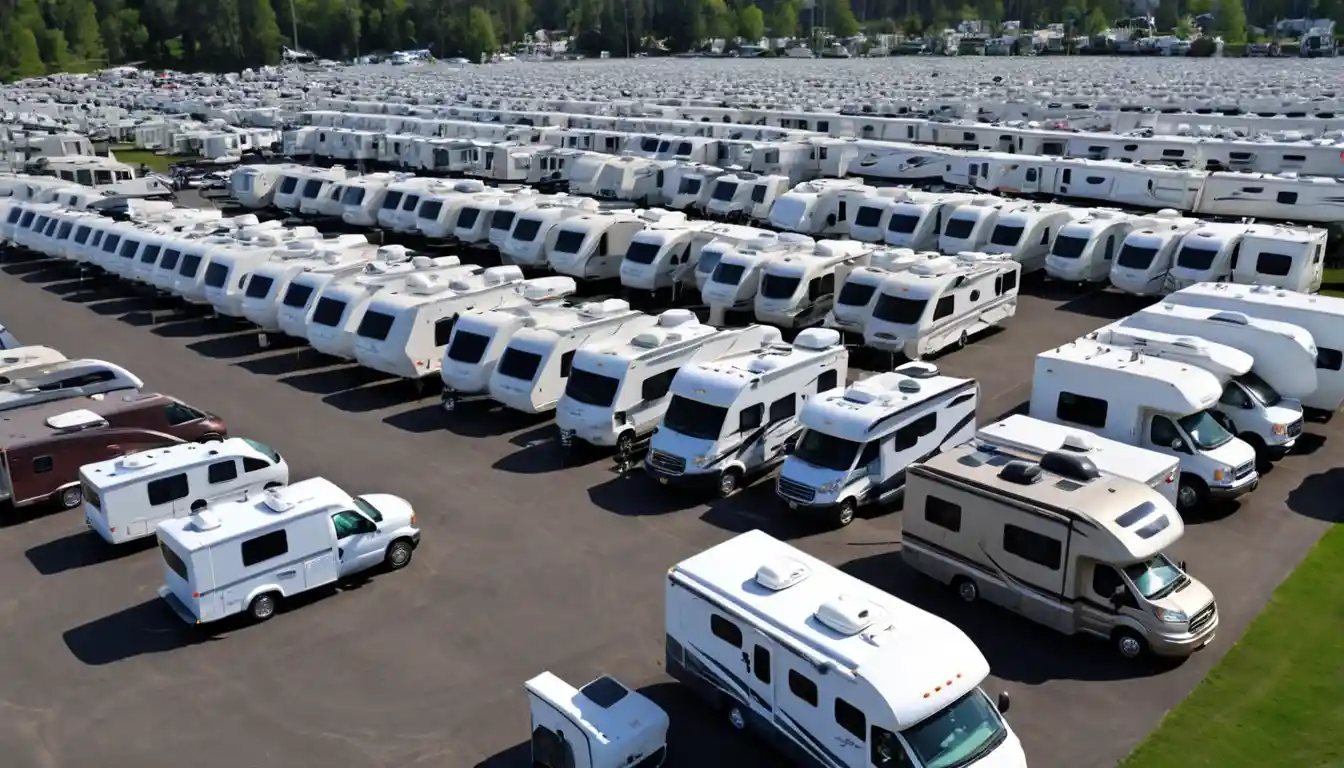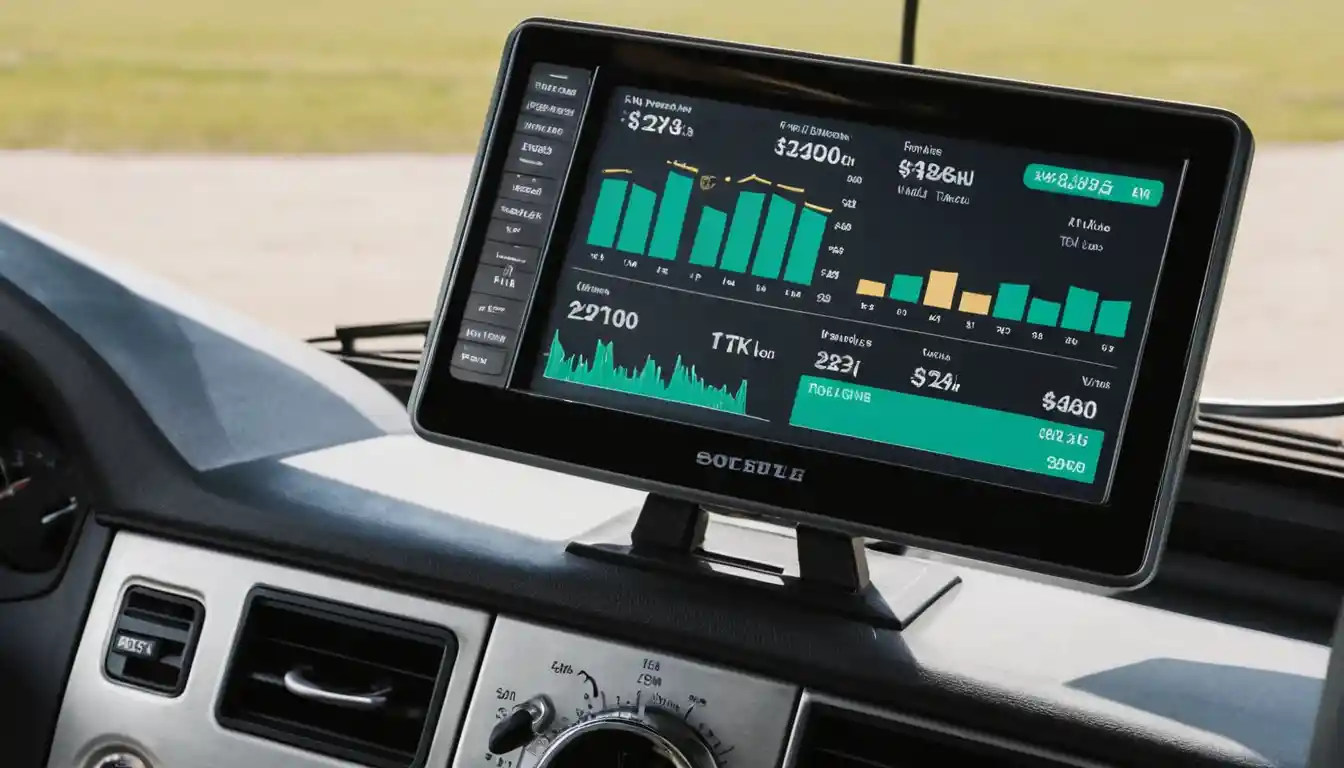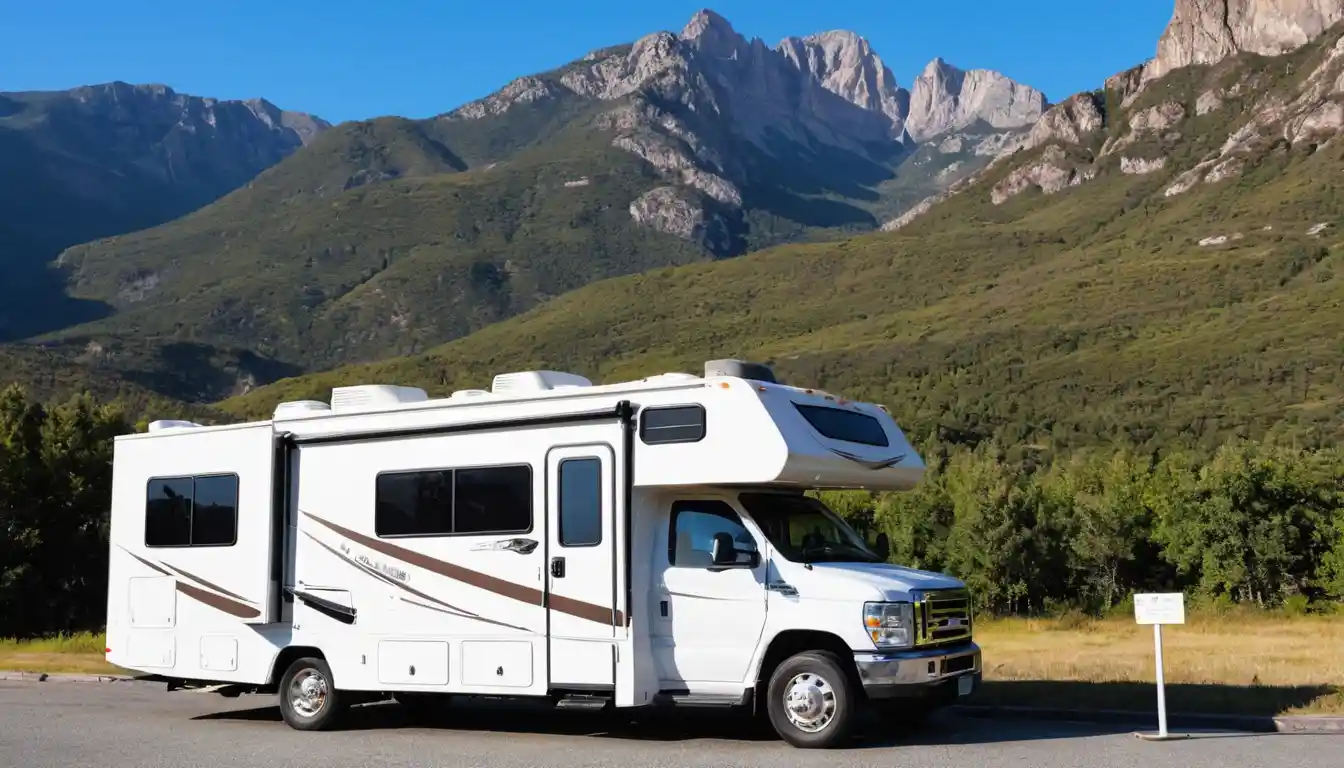Are you looking to sell or buy an RV? Whether you’re a first-time RV buyer or a seasoned traveler, knowing the true value of an RV is essential for making informed decisions. In this RV value guide, we will provide you with expert insights and practical tips on how to assess the value of any RV accurately. Whether you’re in the market for a new RV or looking to sell, understanding its value is crucial in getting the best deal. Read on to explore essential factors that influence RV pricing, including the model, year, condition, and more.
What Affects the Value of an RV?
When it comes to determining the value of an RV, there are several key factors to consider. These elements can significantly impact the final price, whether you’re buying or selling. Below are some of the most important aspects that influence RV values.
RV Make and Model
The make and model of an RV are among the most significant factors in determining its value. Just like any other vehicle, RVs have brand value. Well-known brands like Airstream, Winnebago, or Forest River typically command higher resale prices due to their reputation for quality and reliability. If you’re searching for a pre-owned RV, understanding the specific make and model you are interested in will give you an edge in gauging its value.
For example, an Airstream RV, known for its iconic design and durability, will likely fetch a higher price than a lesser-known brand with similar features.
Year of Manufacture
The year an RV was manufactured plays a pivotal role in determining its value. Newer models generally have higher values due to advanced technology, updated designs, and modern features. Older models, especially those that are well-maintained, can still hold significant value. However, as with any vehicle, the older the RV, the lower its value typically becomes due to depreciation.
For instance, a 2020 RV in good condition will often be priced significantly higher than a 2010 model with similar features.
Condition of the RV
The physical and mechanical condition of an RV is critical in determining its value. An RV that is well-maintained, both inside and out, will fetch a higher price. Regular servicing, clean interiors, and a sound exterior (free from rust and major damage) all contribute positively to the RV’s value.
Be sure to check:
- The condition of the exterior (dents, rust, and scratches can lower the value).
- The quality of the interior (well-maintained upholstery, functioning appliances, and clean interiors are a plus).
- Engine and mechanical components (check for engine maintenance, tire wear, and suspension condition).
Mileage
Like any other vehicle, an RV’s mileage is a major factor in determining its value. The more miles an RV has, the more likely it is to require repairs or maintenance. However, some RVs are built to last for hundreds of thousands of miles, and the engine condition may be more important than the actual mileage. Still, lower-mileage RVs tend to be priced higher than those with significant usage.

RV Type and Features
The type of RV you’re considering also impacts its value. Class A motorhomes, for example, are typically larger and offer more luxurious amenities, which make them more expensive. On the other hand, travel trailers or Class B motorhomes tend to be more affordable but also offer less living space and fewer features.
Other features that affect the value include:
- Solar panels or energy-efficient upgrades.
- Full kitchens and bathrooms.
- Entertainment systems (TV, sound systems, etc.).
- Storage and living space designs.
- Customization options (e.g., upgraded flooring, furniture, or décor).
Using an RV Value Guide for Accurate Pricing
When you’re trying to figure out how much your RV is worth or how much to pay for one, an RV value guide can be a helpful tool. These guides compile information about various RV models and their pricing trends based on factors like year, make, model, and condition.
Here are some top resources you can use to determine the value of an RV:
NADA Guides: The National Automobile Dealers Association provides a detailed guide that gives pricing information based on RV type, year, make, and condition.
Kelley Blue Book (KBB): Kelley Blue Book is a well-known tool for pricing vehicles, including RVs. You can use their online tool to get an accurate estimate based on several factors.
RV Trader: RV Trader is an online marketplace for buying and selling RVs. Browsing listings for similar RVs can give you a sense of the current market value in your area.
How to Use an RV Value Guide Effectively
Start with a Comprehensive Search: Begin by searching for RVs similar to the one you are interested in. Pay attention to the model, year, condition, and mileage of comparable RVs.
Look at Multiple Sources: Don’t rely on just one source. Use multiple value guides (like NADA and KBB) to cross-reference prices and get a more accurate estimate.
Check for Local Price Variations: RV values can vary by location, so make sure you’re comparing prices in your area. A 2015 RV in California may have a different value than one in Florida.
Understand Dealer vs. Private Sale Prices: RV dealers typically price RVs higher than private sellers due to overhead costs, so take this into consideration when using an RV value guide.
Tips for Buying or Selling an RV
Now that you have a better understanding of how to use an RV value guide, here are some practical tips to help you navigate the buying or selling process.
Know Your Budget
Before diving into the market, determine your budget for buying or selling. For sellers, setting a fair price is crucial to attract buyers. For buyers, knowing your budget helps you filter out options that are out of your price range.

Negotiation is Key
Whether you’re buying or selling, be prepared to negotiate. Buyers should aim for a price that’s lower than the asking price but still fair, while sellers should be ready to justify their price based on the RV’s condition, mileage, and market value.
Look Beyond the RV’s Price Tag
The price of the RV is just the starting point. Don’t forget to factor in additional costs such as taxes, registration fees, insurance, and any repairs or upgrades needed. If you’re selling, be transparent about these extra costs to ensure a smooth transaction.
Work with a Trusted Dealer or Platform
If you’re not familiar with RV pricing or the market, working with a trusted dealer or online platform can help ensure you get a fair deal. These professionals have experience with RVs and can provide expert insights on pricing, making the buying or selling process easier.
Conduct a Thorough Inspection
For buyers, a thorough inspection is vital before closing a deal. Consider hiring a professional RV inspector to assess the condition of the vehicle and identify any potential issues that could affect its value.
The Bottom Line
An accurate RV value guide is an essential resource for anyone looking to buy or sell an RV. By considering key factors like the RV’s make, model, year, condition, and mileage, you can make informed decisions about pricing. Using tools like NADA, Kelley Blue Book, and RV Trader can help you assess the value and ensure you’re getting a fair deal.
If you’re looking to buy an RV, make sure you compare multiple listings and consult value guides to understand the market. If you’re selling, setting a fair price based on these factors will help you attract serious buyers and close a deal quickly.
Ready to Buy or Sell Your RV?
Whether you’re looking to upgrade your current RV, downsize, or enter the world of RV ownership, using an RV value guide is the first step to getting the best deal. Start your journey today by exploring trusted online resources and finding the perfect RV for you.
Frequently Asked Questions
How do I determine the value of my RV?
To determine the value of your RV, you need to consider several factors, such as the make, model, year, condition, mileage, and any additional features. Using reliable RV value guides like NADA or Kelley Blue Book can help you get an accurate estimate. It’s also helpful to check local listings for similar RVs to see what others are asking.

Can I rely on online RV value guides for an accurate price?
Online RV value guides, like those provided by NADA and Kelley Blue Book, are excellent resources for getting a rough estimate of your RV’s value. However, the prices provided are only estimates, and actual market conditions, such as location and demand, can affect the final price. It’s always a good idea to cross-reference multiple sources and check local listings.
Do RV dealers offer the best prices for used RVs?
RV dealers often price their vehicles higher than private sellers due to overhead costs and the services they provide, such as warranties and maintenance. While you may find a better deal from a private seller, buying from a dealer offers the benefit of reliability and service after the sale. It’s important to weigh the pros and cons based on your needs.
What is the difference between private sale prices and dealer prices for RVs?
Private sales usually offer lower prices than dealer sales since there are no middlemen, and the seller may be motivated to sell quickly. However, RV dealers often provide added value, including warranties, after-sales services, and thorough inspections, which can justify the higher price.
How do I negotiate the price when buying or selling an RV?
Negotiating the price of an RV involves understanding the market value and the condition of the RV. For buyers, try offering a lower price than the asking price, backed by a solid understanding of the RV’s value. Sellers should be ready to justify their asking price by providing evidence of the RV’s good condition, recent maintenance, and any added features.
Conclusion
In conclusion, understanding the true value of an RV is essential whether you’re buying or selling. By utilizing an RV value guide, considering factors such as the make, model, condition, mileage, and additional features, you can make informed decisions and ensure you’re getting a fair deal. Take the time to cross-reference sources, inspect the RV carefully, and be prepared to negotiate for the best possible price. With these insights, you’re now equipped to navigate the RV market confidently. Whether you’re a first-time buyer or an experienced seller, a well-informed approach is key to securing a great deal.





